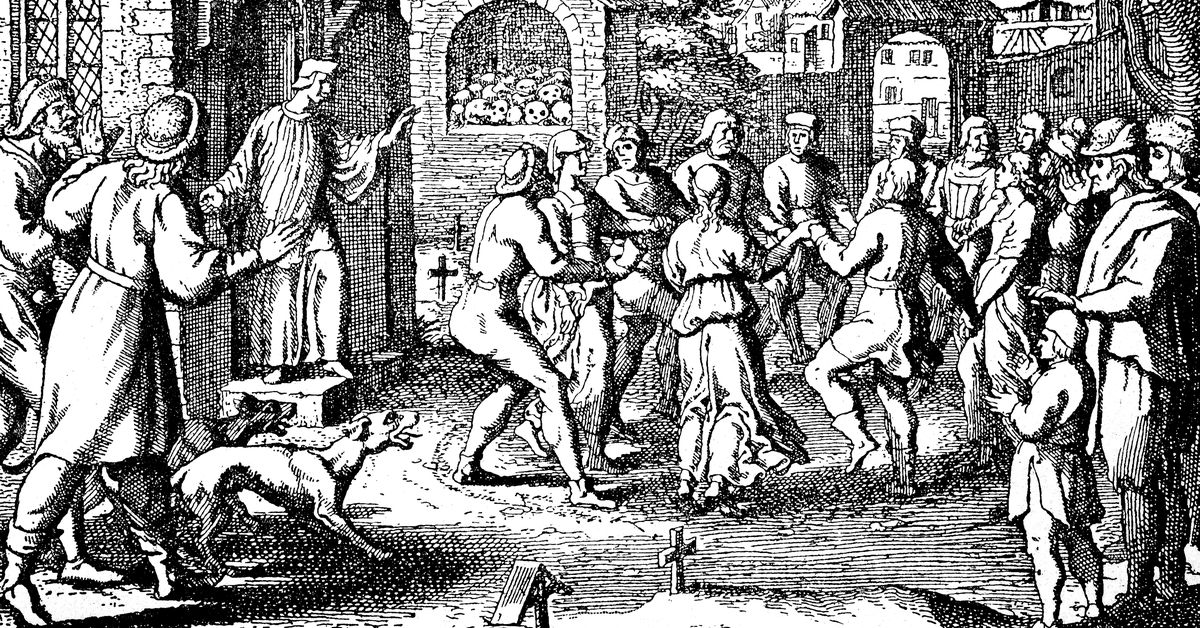History is filled with strange and unusual events that continue to baffle researchers and historians. One such event that stands out for its sheer peculiarity is the “Dancing Plague of 1518.” Imagine a scenario where a town’s residents suddenly find themselves compelled to dance uncontrollably, without rest, for days or even weeks on end. This bizarre occurrence, which took place in Strasbourg, France, serves as a fascinating and bewildering example of how human behavior can defy rational explanation.
The Outbreak
In July of 1518, a small corner of Strasbourg was witness to an inexplicable phenomenon: a sudden outbreak of uncontrolled dancing. It all began when a woman named Frau Troffea took to the streets and began to dance without any apparent cause. What makes this occurrence particularly strange is that she danced for days, and as time went on, more and more people joined her in this unusual dance craze.
Within a week, the number of dancers had swelled to around 400. People from different walks of life, spanning various age groups and genders, were caught up in this bizarre and involuntary dance. The afflicted dancers exhibited frenzied movements, often accompanied by exhaustion, dehydration, and physical injury.
The Dance Epidemic
The dancing epidemic reached such a scale that authorities began to take notice. Concerned by the health and safety of their citizens, local officials initially responded by interpreting the phenomenon as a natural illness. Medical practitioners of the time attributed the dancing to “hot blood,” which was believed to cause irrational behaviors.

In an attempt to cure the dancers, a stage was constructed, and musicians were brought in to facilitate the movement. The hope was that encouraging the dancers to keep dancing would somehow alleviate their symptoms. However, this strategy backfired, as it only intensified the situation.
Theories and Explanations
Centuries later, researchers and historians continue to grapple with understanding the Dancing Plague of 1518. Numerous theories have been proposed, each offering a different perspective on what might have triggered this bizarre event. Some of the prominent theories include:
Mass Hysteria: One prevalent theory is that the dancing plague was a manifestation of mass hysteria. Mass hysteria occurs when a group of people collectively experiences a psychological or physiological symptom without an identifiable physical cause. The stress and social pressures of the time might have contributed to this phenomenon.
Ergot Poisoning: Another theory is that the dancers might have been affected by ergot poisoning. Ergot is a fungus that can grow on grains, particularly rye, and produces toxins known to cause hallucinations, convulsions, and involuntary muscle movements. Consuming contaminated food could have led to the dancing and other strange behaviors.
Sociopolitical Factors: Some historians propose that the dancing was a form of protest or expression against the societal constraints and political pressures of the time. The people of Strasbourg were living in a time of famine, war, and religious upheaval. Dancing could have been a way to cope with these stresses.
The Dancing Plague of 1518 remains one of the most peculiar and puzzling events in history. It serves as a reminder of the complex and often enigmatic nature of human behavior. While modern science and psychology offer some insights into the possible causes, the true explanation behind this episode continues to elude us. As we delve into history’s more eccentric chapters, we are reminded that there is always more to learn and discover about the mysterious facets of our past.



